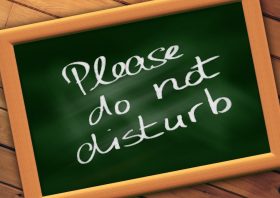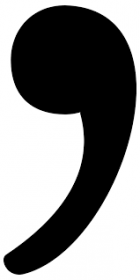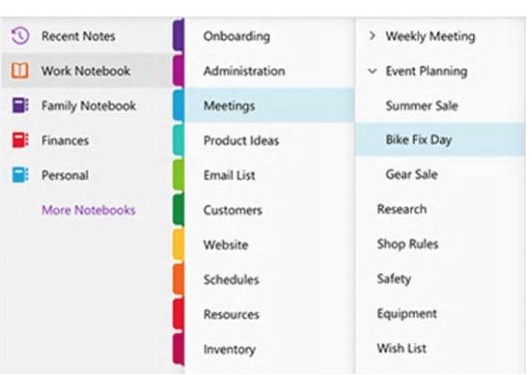Welcome to this guest post by Anne McGhee Stinson
Distractions – the impact on our performance
Minimising distractions at work is a key priority at work for those who want to improve their performance and well-being. Why is minimising distractions more important than ever before?

Distractions, Distractions
In a recent Harvard Business Review Article entitled Learning to live with Complexity the author states: “….[B]usiness today is fundamentally different than it was just 30 years ago. The most profound difference, we’ve come to believe, is the level of complexity people have to cope with.” This rising level of complexity is spawned by new technologies, a global landscape, and more collaborative work environments. Virtually everything about the way we work is changing creating massive distractions in the workplace.
While the complexity continues to increase we haven’t reckoned with the impact it has on our capacity to focus. Neurologically, our central nervous system is hard-wired to pay attention to the most distracting element in the environment. This response system is what kept us safe as a species of hunter gatherers, because the rustle in the bush may well have been a hungry lion.
Unlike today; our distant ancestors had the benefit of a period of recovery after surviving the lurking lion. They went back to the cave, ate, slept, and recovered in peace. There was no 24-hour news coverage, and none of the incessant demands of the modern workplace including back to back meetings, hundreds of emails, projects, teams, travel schedules etc.
External distractions are only part of the problem. In an overloaded society; the internal distractions caused by too much input, financial worries, relationships and family pressures take their own toll. Human beings have a limited amount of attention and energy to spend at any given time and because we are so inundated with complexity, information and data, our days are constantly filled with lurking lions causing our attention to be exhausted.
From a professional perspective, this can translate into an inability to access innovation, creativity, intelligent risk-taking, decision-making and our full performance potential. It can also mean we are missing opportunities for strategic connections, deepening relationships, mentoring, coaching, guiding and so forth. From a strictly personal vantage point, people are experiencing more stress, anxiety, isolation, and fear than ever.
Distractions – how to minimise them
Organizations must address these challenges with a new approach and train the skills most essential to success in complex, distraction laden work environments.
Initially, we must learn how to manage attention and energy at work, learn to reduce distractions, manage time and information input. These are the critical skills that will help employees stay productive in an ever-changing work environment. Some simple adjustments include:

Stay focused
1. Turn off all the bells, chimes and notifications on your phone and computer. Instead schedule focused time to process incoming information.
2. Schedule routine 1:1 meetings with team and staff to reduce ad hoc interruptions during the day.
3. Work from home or a remote location where you are less likely to be distracted by open office environments.
4. Establish communication guidelines to set reasonable response time expectations.
Next, we must learn how to maintain focus on the priorities that matter most. Author Daniel Pink noted in his book “Drive” that an interesting change occurs in our brain when we commit to such a goal. He states; “Once we consciously focus on a goal, the brain subconsciously evaluates goal-relevant information in our environment that is consistent with achieving the goal. Like radar, it selectively notices incoming data that may contribute to or influence the goal. Concurrently, the brain inhibits irrelevant information to protect our delicate cognitive capacities from overload.”
5. Identify your priorities are, and create an emotional attachment to them to keep you focused.
6. Rigorously manage your calendar to make certain you’re are spending your time on what matters most.
7. Learn to say “no” or “not now” to less important priorities.
8. Limit your priorities to no more than 7-10 at a time.
9. Schedule routine meetings to address accountabilities on each priority.
Limit distractions and focus on what matters most. It’s a simple solution to a complex problem; and it works.
This guest post was from Anne McGhee Stinson, Managing Partner, InteraWorks (Elevating the Human Experience at Work) www.interaworks.com
Tags: Anne McGhee Stinson, Distractions at work, Improve mental health, Improve productivity, Improve well-being, InteraWorks, Managing work Distractions, Stay Focus
Top tip on email etiquette: punctuation matters, even on the least formal email and the apostrophe is one of the least-understood marks. One of the difficulties in writing email is that it has replaced so many forms of business communication from the telephone conversation, through the informal memo, to a letter even a short report. Whatever the formality of the document, it is the punctuation that gives your words voice tone and makes your meaning clear.
Over 90% of the people who attend my in-house workshops on punctuation name the apostrophe as the mark they would most like to understand and be able to use correctly. Whether it’s whether one is needed at all, whether to place it before or after the ‘s’ and how to use it when names end in ‘s’.

Email Etiquette: Punctuation Matters
Most people look blank when faced with rules such as, place the apostrophe after the ‘s’ on a plural unless the plural is not made by the addition of ‘s’ in which case the apostrophe is placed before the ‘s’. And who can blame them!
One of the best-kept secrets in punctuation is that there is actually only one rule that matters, because it encompasses all the other ones and ensures that the apostrophe is always in the right place.
Before you can use the rule you have to answer three simple questions:
1.Is anything owned?
The apostrophe is a hook, it hangs on a word to warn the reader that it is not a plural, the ‘s’ indicates ownership.
2.What is owned?
This might be something tangible like a pen or laptop, or something less so like an office. It might be a mood, feeling or advice. The terms ‘owned’ or ‘used’ are generally used to loosely describe this.
3.Who is the owner?
This might be a named person, a group, and organisation, etc.
So the punctuation rule that everybody needs? Draw a circle around the name of the owner and the apostrophe will always go on the circle.
Good email etiquette and punctuation means its easier for people to read your email and less scope for mis-understanding. All this saves time, reduces email overload and hence helps improve productivity and well-being.
Joanna Gutmann, author of Readability and leader of in-house workshops on punctuation and the mechanics of writing gives a useful tip to get the apostrophe right every time.
Tags: email etiquette, email punctuation, Improve productivity, Joanna Gutman, well being
OneNote – my handbag for work
How often are you (or your boss) weighed down carrying piles of paper from one meeting to the next and then back to the office (or home) to sort through them? What happens when one of the sets of papers changes last minute between meetings? Could having a digital notebook to access all your files and emails in one place help you optimise your working day and work smarter? This is how one EA and her boss changed their way of working to just such a system using OneNote.![]()
Seriously, what is OneNote?
It really is a digital notebook, which gives you the ability to use Microsoft’s full suite of tools, such as Word, PowerPoint, Excel, Teams directly through it.
How can I get my hands on it?
OneNote is licensed as part of Microsoft Office so a lot of companies have it already on their company devices but perhaps some of them may think it’s just a text editor, or a simple version of Word. If you don’t already have Microsoft Office you can easily subscribe to it for either business or personal use by logging onto their website, or speaking to your IT department.
What can I use it for?
It’s a wonderful collaborative tool which used correctly makes life, well, just so much easier. You can use OneNote to take minutes, record video & audio clips, create To Do Lists, embed links and articles from the web, add pictures, add voice notes, drawings, and the list goes on. Most importantly you can share your notebooks and edit documents at the same time with multiple people, and open your notebooks on any other device as long as long as the device has OneNote preinstalled already.
How do I use it?
As an Executive Assistant with over 20 years’ experience, I was fortunate enough to land in the tech savvy, fast-paced Visa, and found myself looking after an extremely busy and very down to earth Chief Of Staff (Claire) within the CEO’s office. I was already using OneNote personally, however I had never explored its professional capabilities until I joined Visa. My lovely colleague (Helen) who supports the CEO (Charlotte) changed my whole way of working when SHE introduced me to her way of using OneNote with the CEO, so I have her to thank for me writing this blog .
How do we use it?
In the CEO office we use OneNote as a virtual “briefcase” or “bag”, and we actually refer to it as the “Daily Bag”, “Reading Bag” or “Meeting Bag”. Every day we use it to transport and store a multitude of documents, questions and information that Charlotte and Claire need to access at any time, any place, anywhere, and all of the information stays secure. The key functions are mobile, secure, virtual.
The first thing we did was to create separate “shared notebooks ” for Charlotte and Claire, and each notebook had a tab called “Daily Bag”. We then created a daily page which was dated, and this is where we would provide a brief narrative of all the important requests, information, questions asked by others, and documents for review which we would extract from their inboxes. Sometimes copies of the documents could be attached to the page for quick reference, and the best thing is that the notebook could be used on the move.
It’s really like having a handbag with all your documents in one place but much easier to find the contents inside!
OneNote is excellent, if you want to share documents, with real time edits, and store different types of files from the Microsoft Office suite of tools, embed links, web pages, videos, audio and pictures, and most of all carry it with you wherever you need to be.
It has helped us to maximise the productivity of the CEO office, optimising our working day and allowing us to work smarter and faster.
 Paula Simpson is EA to the Chief of Staff at Visa
Paula Simpson is EA to the Chief of Staff at Visa
Tags: Digital notebook, Improve productivity, OneNote, Save time, Work smarter